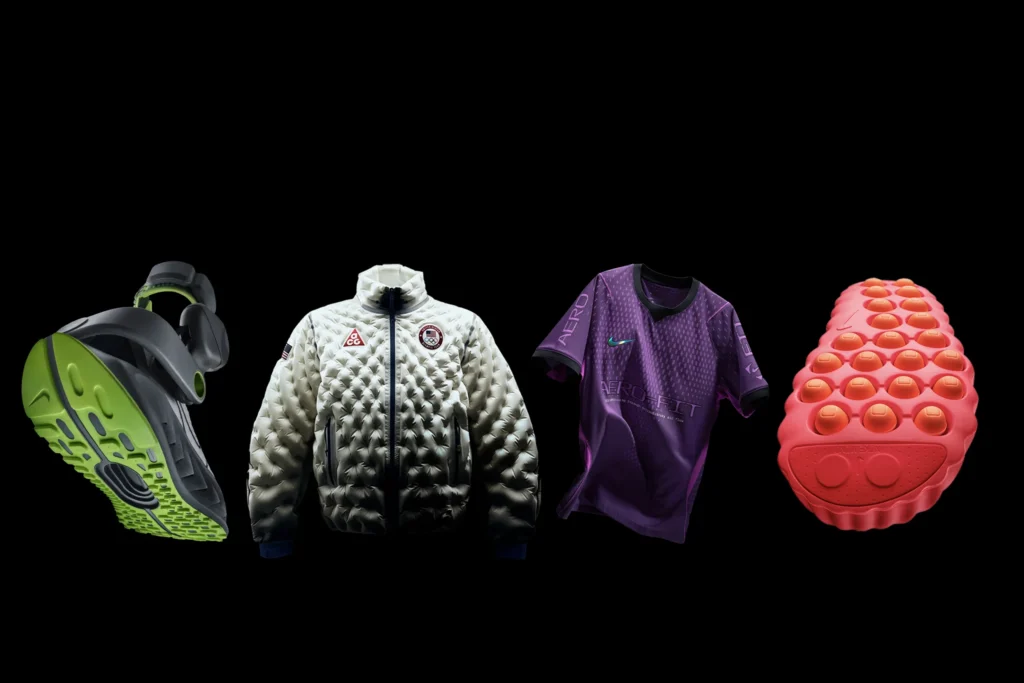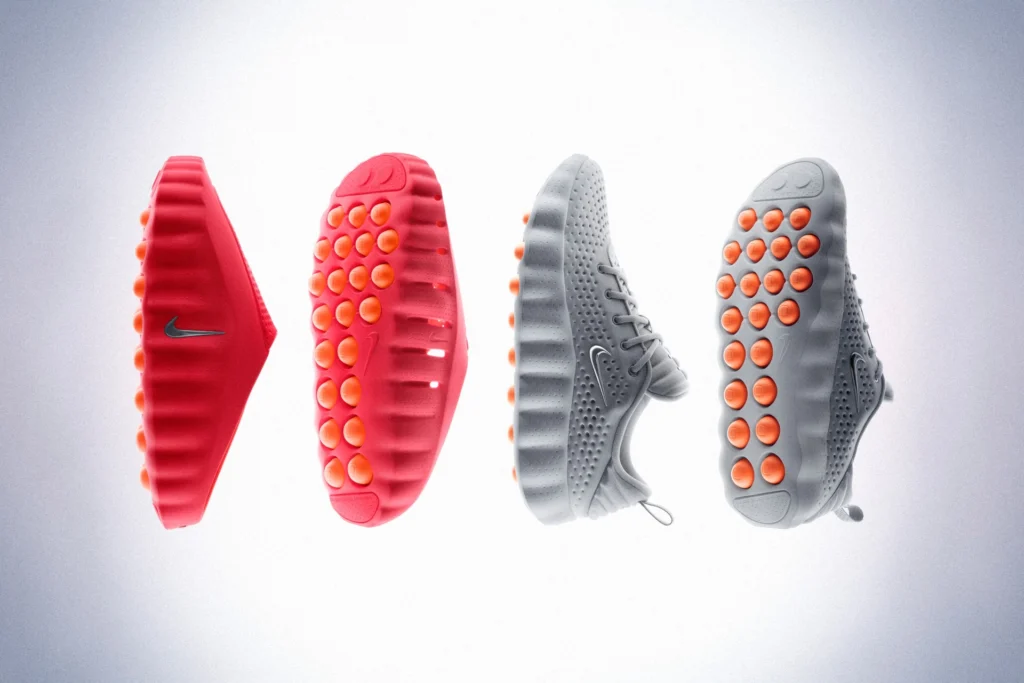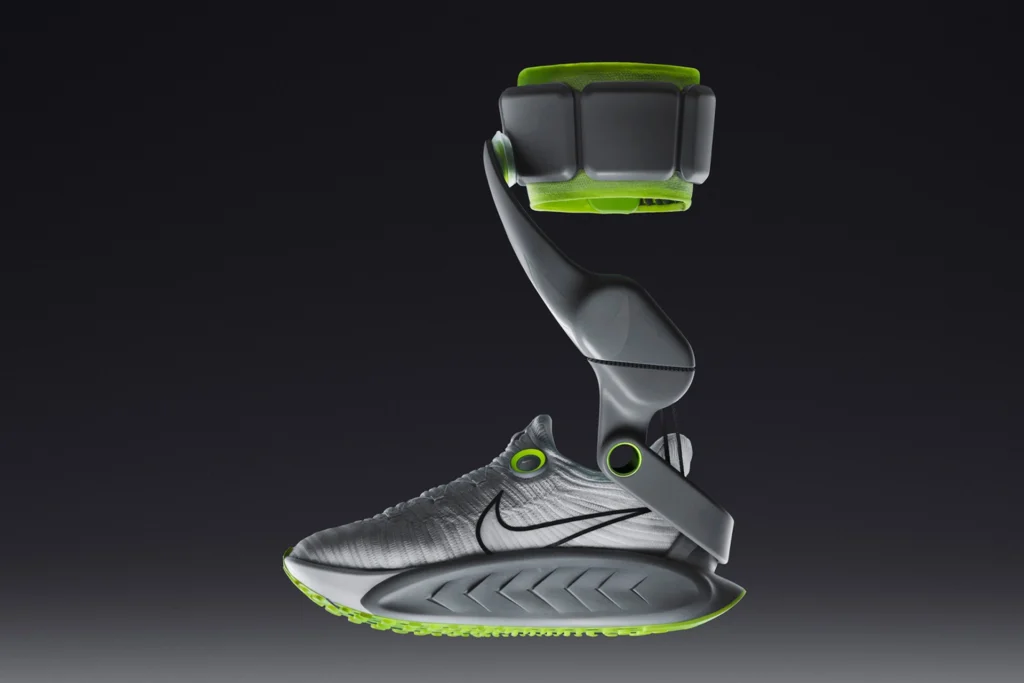The Swoosh is fusing robotics and neuroscience into its latest designs, moving wearable tech beyond tracking and into active performance
We may not have flying cars (yet), but Nike’s building gear that makes the future feel closer, and its new robotic shoes might just get you there faster.
The activewear giant has unveiled a slate of new technologies as it searches for a refreshed identity after a stretch of slowing sales and rising competition. The move, which unites Nike’s Innovation, Design and Product teams across Nike, Jordan Brand and Converse, is part of its new Sport Offense division, an internal “innovation engine.”
With it come four major innovations that mark Nike’s next chapter in performance science:

Aero-FIT introduces new cooling technology that channels more than twice the airflow of previous Nike materials, using fabric made entirely from recycled textile waste
Nike Mind, more than a decade in development, debuts the company’s first neuroscience-based footwear, the Mind 001 mule and Mind 002 sneaker, designed to help athletes stay calm and focused
Therma-FIT Air Milano applies Nike Air technology to outerwear, allowing wearers to adjust warmth in real time by inflating or deflating air within its baffles, shifting from hoodie-light to puffer-level insulation.
But the most headline-stealing innovation is Project Amplify, a powered footwear system for running and walking developed with Massachusetts-based robotics firm Dephy.
Project Amplify may be Nike’s most daring experiment yet, with a prototype that it says marks the world’s first powered running shoe designed to help everyday athletes move a little faster and farther with less strain.
‘Wearables’ Come Full Circle
Nike’s step into robotics may sound like new territory, but it never really left the wearables game. After all, clothes and sneakers were the original wearables, designed to sync with the body long before devices started tracking metrics. But as the global (tech-enabled) wearables market heads toward $190 billion by 2032, Nike’s approach feels like a pivot from passive measurement to active performance. Rather than logging data, its latest designs enhance motion itself.
The design integrates a lightweight motor, drive belt and rechargeable cuff battery with a carbon fiber–plated running shoe that can be worn with or without the robotic component. The system uses motion algorithms informed by the Nike Sport Research Lab and augments natural lower-leg and ankle movement, offering what engineers describe as “a second set of calf muscles.”
Michael Donaghu, Nike’s vice president of Create The Future, Emerging Sport and Innovation, said the idea began with a simple question: “What if we could help athletes move faster and farther with less energy and more fun?”
“Our job is to dream big while keeping athletes at the center,” Donaghu said. “At its core, Project Amplify is about seamlessly adding a little more power to your stride. The fun comes from realizing you can do more than you thought you could — whatever ‘more’ means to you.”
Still, it’s early days. Nike says more than 400 athletes have logged over 2.4 million steps in testing (the equivalent of roughly 12,000 laps around the Nike Sport Research Lab’s indoor track) across at least nine iterations of the hardware. According to the sportswear giant, many testers said the shoes felt like an extension of their bodies, making uphill runs feel like flat ground. Some even reported that the powered footwear helped them improve their pace from a 12-minute mile to around 10.
Shoes of the Future?
While those eager to try Nike’s robotic footwear will have to wait a little longer, they won’t have to wait for the brand’s next leap into science-driven design.

In January 2026, Nike will release the Mind 001 and Mind 002, its first neuroscience-based shoes built to help athletes lock in focus before and after competition. The two designs serve different needs: the Mind 001 mule offers easy-on, easy-off comfort, while the Mind 002 sneaker locks the foot to the footbed for more sensation and support, with both engineered to connect the body’s sensory pathways with performance.
Developed inside Nike’s Mind Science Department, a specialized research group within the Nike Sport Research Lab, the project draws from studies of the nervous system, brain activity and cognition in motion. The “sensory footwear” is made with 22 independent foam nodes per shoe that offer the feeling and texture of the ground beneath them. Nike says the result heightens bodily awareness and can help athletes feel more focused and connected to their movement.
The footwear will be available for purchase on its website and in select stores, the brand confirms.
“For 45 years, Nike has studied the body in motion — how muscles fire, how joints move, how oxygen fuels performance,” Nike chief science officer Dr. Matthew Nurse said. “Now, we’re expanding into the mind. By studying perception, attention and sensory feedback, we’re tapping into the brain-body connection in new ways. It’s not just about running faster — it’s about feeling more present, focused and resilient. That’s the next frontier of performance.”
Nike’s next generation of designs builds on recent high-profile debuts, including its footwear collaboration with recovery tech brand Hyperice, and the debut of NikeSkims, a Kim Kardashian-powered play meant to reignite women’s activewear sales.



